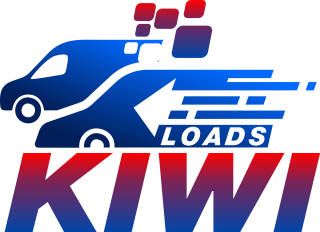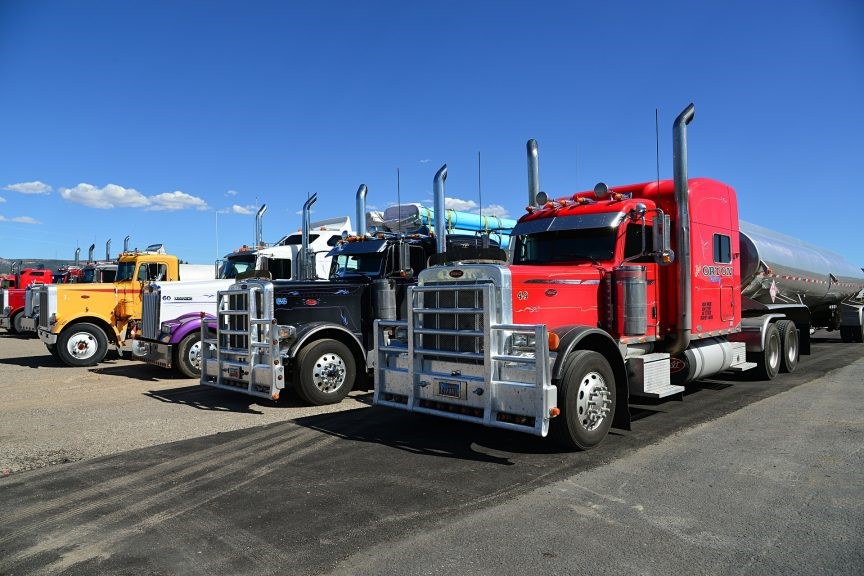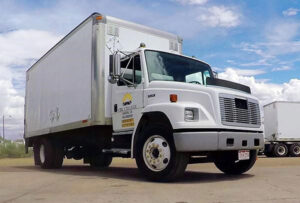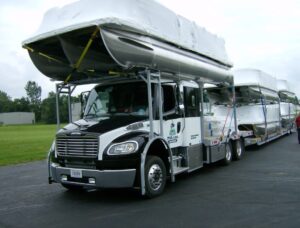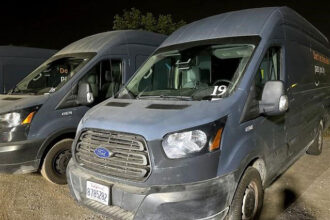Table of Contents
Introduction
Starting a semi-trailer business is an exhilarating endeavor that holds the promise of significant financial rewards. However, unlocking the full potential of this venture requires careful planning and execution. Whether you’re a seasoned trucking professional or new to the industry, success hinges on making the right decisions at every step.
Here is a comprehensive checklist for your semi-trailer business, addressing each crucial aspect to help you make the right choices that can bolster your bottom line and secure your position in the industry. So, dive in and chart the course for your semi-trailer business’s prosperous journey!
Semi-Trailer Business Checklist
- Start With Proper Planning
- Financing
- Legal Registration
- Assets
- Driver Training and Hiring Practices
- Employing Right Tools
- Market Your Company
Overview of Semi-Trailer Business Checklist
How to Choose Semi-Trailer Business Checklist
Pros & Cons of Semi-Trailer Business Checklist
What to Watch Out For
Pro Tips
Recap
>>>MORE: Trailer Truck Business Checklist
1. Start With Proper Planning
Planning lays the foundation for your semi-trailer business. Without a solid plan, you risk stumbling into pitfalls that you could avoid.
- Offers Clarity
- Facilitates Resource Allocation
- Enhances Risk Mitigation
- Consumes Time
- Lacks Adaptability
- Business Name
Choose a unique and memorable business name that reflects your brand identity.
- Target Market:
Define your target market precisely, specifying the industries and regions you intend to serve.
- Rates Per Mile:
Determine competitive and profitable rates per mile that consider factors like fuel costs, maintenance, and market demand.
- Business Plan: Develop a comprehensive business plan that includes the following:
- Mission Statement: Clearly articulate your business’s purpose and values.
- Goals and Objectives: Outline specific, measurable, and time-bound goals to guide your business’s growth.
- Target Market Analysis: Provide a thorough analysis of your chosen target market, including demographics, industry trends, and potential clients.
- Financial Projections: Detail your financial forecasts, including income statements, cash flow projections, and balance sheets.
- Marketing Strategy: Define your marketing approach, including online and offline strategies, to reach and attract your target audience.
- Operational Plan: Describe how your business will operate, including fleet management, maintenance, and driver management.
- Legal and Regulatory Compliance: Explain how your business will adhere to legal requirements and industry regulations.
- Risk Analysis: Identify potential risks and outline strategies to mitigate them.
- Team Structure: Detail the roles and responsibilities of your team members, including drivers, managers, and support staff.
- Funding Requirements: Specify your funding needs, whether through loans, investments, or personal capital and how you intend to secure financing.
- Exit Strategy: Consider outlining an exit strategy, such as selling the business or passing it on to the next generation.
Remember that a well-structured business plan is the roadmap that guides your semi-trailer business to success. Consider seeking professional assistance or industry-specific resources to refine your business plan, ensuring it aligns with your goals and industry best practices.
2. Financing
Securing adequate financing is critical to acquiring the necessary assets, vehicles, and resources to run a semi-trailer business.
- Provides Capital
- Facilitates Growth
- Ensures Financial Stability.
- Involves Debt
- Poses Credit Risk
- SBA Loans (Small Business Administration Loans): Investigate the availability of SBA loans, which are government-backed loans designed to support small businesses. They often offer favorable terms and lower interest rates.
- Commercial Truck Financing: Explore specialized financing options tailored to the trucking industry. Many lenders offer financing specifically for acquiring commercial vehicles, making it easier to secure the necessary equipment.
- Small Business Term Loans: Consider traditional small business term loans offered by banks and financial institutions. These loans provide a lump sum of capital with fixed interest rates and repayment terms.
- Business Bank Account: Open a dedicated business bank account to manage your finances separately from personal accounts. This helps maintain financial transparency, streamline transactions, and simplify tax reporting.
Explore various financing options, including loans, grants, investors, or personal savings. Create a comprehensive budget that outlines your financial needs and repayment plans.
3. Legal Registration
Legal registration is the backbone of your business, ensuring you comply with government regulations and operate legally.
- Confers Legitimacy
- Provides Liability Protection
- Ensures Compliance
- Involves Paperwork and Fees
- Entails Complexity
Choose an Appropriate Business Structure: Determine the most suitable legal structure for your semi-trailer business, such as a Limited Liability Company (LLC) or Corporation, considering factors like liability, taxation, and management.
Ensure Proper Licensing: Ensure that your drivers possess the necessary Commercial Driver’s Licenses (CDLs) to operate commercial vehicles legally.
Obtain US DoT and MC Numbers: Depending on the size and nature of your operation, you may need to register with the US Department of Transportation (DoT) and obtain a Motor Carrier (MC) Number to engage in interstate commerce.
File Form 2290: Submit the 2290 tax form annually if your vehicles meet the criteria for heavy vehicle use tax (HVUT) regulation.
Comply with IFTA: If your semi-trailer business operates across multiple jurisdictions, ensure compliance with the International Fuel Tax Agreement (IFTA) for simplified fuel tax reporting.
Designate Process Agents: File a BOC-3 form to appoint process agents who can receive legal documents on your behalf in various states.
Obtain a SCAC Code: If applicable, obtain a Standard Carrier Alpha Code (SCAC) to uniquely identify your business for shipping and logistics purposes.
Register for UCR: Register your business with the Unified Carrier Registration (UCR) program if you engage in interstate transportation.
Participate in IRP: If your vehicles operate in multiple US states or Canadian provinces, participate in the International Registration Plan (IRP) for simplified vehicle registration.
Ensuring proper business registration, licenses, and compliance with industry-specific regulations is fundamental to operating your semi-trailer business legally and efficiently. By addressing these key aspects, you can navigate the complexities of the trucking industry while maintaining regulatory compliance.
>>>PRO TIPS: Semi-Trailer Business Plan
4. Assets
Acquiring the right assets, such as semi-trailers and vehicles, is fundamental to the core of your business.
- Boosts Operational Capacity
- Enhances Competitiveness
- Provides Depreciation Benefits.
- Involves Upfront Costs
- Necessitates Maintenance
Evaluate Purchase vs. Lease: Consider the financial standing of your business and your overarching strategy when deciding whether to purchase or lease assets, such as trucks, to meet your operational needs.
Establish a Maintenance Schedule: Implement a proactive maintenance schedule for your assets, including regular inspections and servicing, to extend their lifespan and mitigate long-term operational costs.
Acquire Trucks Strategically: Make informed decisions when acquiring trucks, taking into account factors like load capacity, fuel efficiency, and maintenance requirements.
Utilize ELDs for Compliance: Implement Electronic Logging Devices to ensure compliance with Hours of Service (HOS) regulations, enhancing efficiency and adherence to legal requirements.
Secure Adequate Insurance Coverage: Explore insurance options, including cargo insurance and liability coverage, to protect your assets and mitigate financial risks associated with the trucking industry.
5. Driver Training and Hiring Practices
Your drivers are the backbone of your business. Hiring skilled drivers and providing ongoing training ensures safe and efficient operations.
- Enhances Safety
- Boosts Customer Satisfaction
- Ensures Compliance
- Requires Investment
- Yields High Turnover
Conduct Comprehensive Hiring: Implement a rigorous hiring process that encompasses thorough background checks and driving record assessments.
Invest in Ongoing Training: Commit to continuous training programs to ensure your drivers stay current with industry best practices and safety regulations.
Establish Robust Safety Protocols: Put in place clear and stringent safety protocols, and consider offering incentives to promote accident-free driving among your drivers.
6. Employing Right Tools
The tools and technology you use directly impact your business efficiency and customer service quality.
- Streamlines Efficiency
- Enhances Customer Satisfaction
- Maintains Competitive Edge
- Entails Initial Investment
- Involves Learning Curve
Conduct Research and Make Strategic Investments: Thoroughly research and strategically invest in industry-specific software, including GPS trackers, fleet management software, freight factoring services, and fuel cards. These tools optimize fleet management, streamline logistics, and facilitate efficient communication within your organization.
Foster Skill Development through Training: Prioritize the development of your team’s skills by providing comprehensive training that equips them to proficiently harness the capabilities of the tools and technology at their disposal.
7. Market Your Company
Effective marketing is crucial for attracting customers and establishing a strong brand presence.
- Drives Customer Acquisition
- Builds Brand Recognition
- Facilitates Adaptability
- Involves Costs
- Presents Competition Challenges
Create a Comprehensive Marketing Plan: Develop a detailed marketing plan that encompasses both online and offline strategies aimed at effectively reaching and engaging your identified target audience.
Monitor Marketing Effectiveness: Continuously assess the impact of your marketing efforts and be prepared to adapt your approach as necessary to ensure optimal results and alignment with your business goals.
Overview of Semi-Trailer Business Checklist
Starting a semi-trailer business is an enticing endeavor, one that promises potential prosperity in the ever-expanding world of logistics and transportation. However, to navigate this complex industry successfully, it’s crucial to have a well-structured roadmap in the form of a Semi Trailer Business Checklist.
This checklist acts as your guiding compass, helping you steer through the challenges and opportunities that come your way. The components of this Semi Trailer Business Checklist, encompass proper planning, financing strategies, legal registration requirements, asset acquisition, driver training and hiring practices, the utilization of essential tools, and effective marketing strategies.
How to Choose Semi Trailer Business
Starting a semi-trailer business is an exciting yet complex endeavor. Here are the key steps to consider:
Conduct extensive research on the trucking and logistics industry. Familiarize yourself with market trends, competition, and potential niches.
Develop a comprehensive business plan outlining your mission, goals, target market, and financial projections. This plan serves as your roadmap to success.
Choose an appropriate legal structure for your business, such as an LLC or corporation, and register it accordingly.
Explore various financing options, including loans, grants, investors, or personal savings, to secure the necessary capital for your business.
Decide whether to purchase or lease your semi-trailers based on your financial situation and business strategy. Acquire the right equipment to meet your operational needs.
Assemble a competent team and provide them with proper training to ensure they can effectively operate and maintain your assets.
Develop a marketing plan that combines online and offline strategies to reach your target audience effectively.
>>>GET SMARTER: Semi-Trailer Business Accessories You Need to Succeed
Pros & Cons of Semi-Trailer Business
Pros
- Offers Lucrative Opportunities
- Provides Operational Flexibility
- Ensures Industry Demand
Cons
- Involves High Operating Costs
- Presents Regulatory Challenges
- Entails Market Competition
What to Watch Out For
When entering the semi-trailer business, be cautious of the following:
Rising Fuel Costs
Fluctuations in fuel prices can affect your profit margins. Implement fuel-efficient practices and monitor fuel expenses closely.
Driver Shortages
The industry often faces a shortage of qualified drivers. Focus on attracting and retaining skilled professionals.
Economic Factors
Economic downturns or disruptions in global trade can impact your business. Diversify your clientele to minimize risks.
Pro Tips
To excel in the semi-trailer business, consider these pro tips:
- Embrace Technology: Utilize industry-specific software and tools for efficient fleet management and logistics optimization.
- Safety First: Prioritize safety protocols and ensure drivers adhere to regulations and best practices.
- Customer Service: Exceptional customer service can set you apart. Build long-lasting relationships with clients and shippers.
Recap
Starting a semi-trailer business offers significant potential for financial success in logistics and transportation. To excel in this complex industry, you need a well-structured Semi Trailer Business Checklist. This checklist covers vital aspects like planning, financing, legal requirements, asset management, driver training, tool utilization, and marketing.
With this checklist, you can steer your semi-trailer business toward prosperity in the ever-expanding realm of logistics and transportation.
